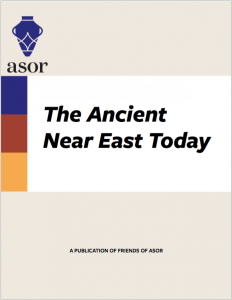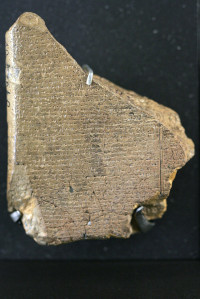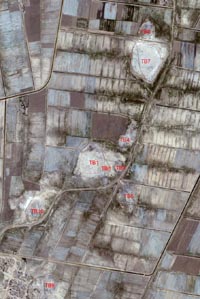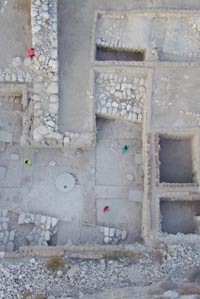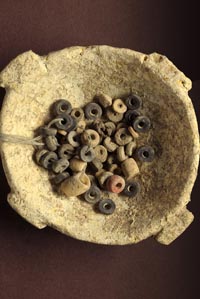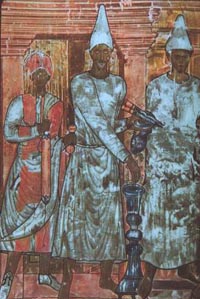

May 2014
Vol. 2, No. 5
Welcome to The Ancient Near East Today, Vol. II, No. 5! This month we ask the question, is it the best of times or the worst of times for Biblical and Near Eastern Studies in the United States? Are universities taking these disciplines seriously? Is society paying attention? Mark Smith lays out some of the issues and expresses his concerns. Responding to Smith are two podcast interviews with Gary Rendsburg and Richard Friedman, each with a different take on the situation. We also present a series of articles highlighting some of the most exciting archaeological projects in the Near East. Carlo Lippolis discusses the early results from an important new project at Tulul al Baraqat in Southern Iraq. Two articles present dramatic new discoveries from the Early Bronze Age in Israel: Matthew Adams and his colleagues on Megiddo, and Ianir Milevski and his colleagues on Ein Zippori. Finally, Jennifer Baird looks at the well-known site of Dura Europos.
As always, we encourage you to send The Ancient Near East Today articles to family and friends, post links to Facebook and Twitter, and to be in touch with the editor. Remember, being a Friend of ASOR is free, so please spread the news!
The State of Biblical and Ancient Near Eastern Studies in America
By Mark S. Smith
I thank ANE Today for asking me to address this question. The perspective on the state of Biblical and Ancient Near Eastern (ANE) studies that I offer here is my personal take; I speak for no one else. Furthermore, my remarks are also hardly comprehensive.
READ MORE
 Friends of ASOR Podcast: Dr. Gary Rendsburg, “Best of Times, Worst of Times”
Friends of ASOR Podcast: Dr. Gary Rendsburg, “Best of Times, Worst of Times”
Listen to ASOR’s own Ancient Near East Today editor, Alex Joffe talk with Dr. Gary Rendsburg, about the state of biblical archaeology and the study of the humanities.
LISTEN
 Italian Archaeological Expedition in Tulul al Baqarat of the Centro Scavi di Torino
Italian Archaeological Expedition in Tulul al Baqarat of the Centro Scavi di Torino
By Carlo Lippolis
Italy has a long and distinguished tradition of work in Mesopotamia. Centro Scavi Torino began research and excavations in Iraq in 1964 with excavations at the Greek city of Seleucia on the Tigris, about 30 kilometers south of Baghdad.
READ MORE
 Friends of ASOR Podcast: “State of Biblical Archaeology,” Featuring Professor Richard Friedman
Friends of ASOR Podcast: “State of Biblical Archaeology,” Featuring Professor Richard Friedman
In this episode ASOR’s own Ancient Near East Today editor, Alex Joffe spoke with Richard E. Friedman, author and University of Georgia professor, about the state of biblical archaeology and the study of the humanities.
LISTEN
 Temples and Temple-Builders at Early Bronze Age Megiddo
Temples and Temple-Builders at Early Bronze Age Megiddo
By Matthew J. Adams, Jonathan David, Robert S. Homsher, and Margaret E. Cohen
Tel Megiddo lies in the heart of the Jezreel Valley, at the hub of international roads between Egypt and Syria. Its local importance in all periods of the Bronze and Iron Ages cannot be overstated but while major excavations have taken place at well-known sites like Megiddo, Jezreel, and Taanach.
READ MORE
 Rescuing Ein Zippori, a late prehistoric site in the Galilee
Rescuing Ein Zippori, a late prehistoric site in the Galilee
By Ianir Milevski, Nimrod Getzov, & Roy Liran
Before Highway 79 was widened, drivers are likely to have noticed a long series of tents on the north side of the road just before the entrance to the Sepphoris National Park. Few suspected that they were driving across one of the largest and most important late prehistoric sites in the Galilee.
READ MORE
 The Inner Lives of Ancient Houses: An Archaeology of Dura-Europos
The Inner Lives of Ancient Houses: An Archaeology of Dura-Europos
By J.A. Baird
Dura-Europos, on the Syrian Euphrates, is one of the best preserved and most extensively excavated sites of the Roman world. It is justly famous for its elaborately painted synagogue, early church, and Mithraeum, inscriptions in many languages, and the first evidence of chemical warfare. To judge from the range of languages present, the multicultural world of Dura-Europos included Greeks, Romans, Jews, Christians, Arabs, Persians, and many more.
READ MORE
